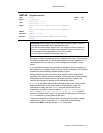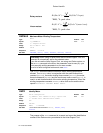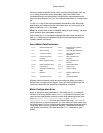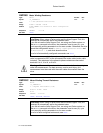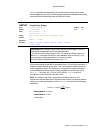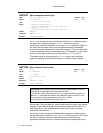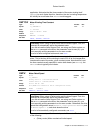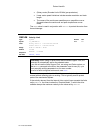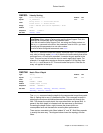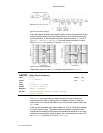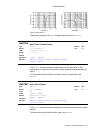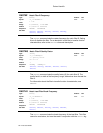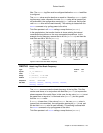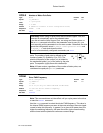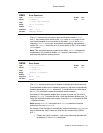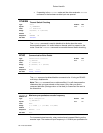
Parker Hannifin
Chapter 6 Command Reference 119
DMVSCL
Velocity Scaling
Type
Drive Configuration
Product Rev
Syntax
<a_>DMVSCL<r>
Aries 2.0
Units
Rotary motor: r = revolutions/second
Linear motor: r = meters/second
Range
Ø.ØØ to 4ØØ.ØØ (motor/drive dependent): ±Ø.Ø1
Default
4.ØØ
Response
DMVSCL: <*>1ØØ.Ø
See Also
DMODE, DMTR
Auto-Setup: When using a Parker motor and the Aries Support Tool, this
command is automatically set for the selected motor.
If you did not use the Aries Support Tool, are using non-Parker motors, or
sent an RFS command to the drive, the parameter is set to 4.00—you must
manually set this parameter to a non-zero number.
For a list of auto-configured commands, see DMTR.
The DMVSCL command scales the velocity command input. This command is
only valid in Velocity mode (DMODE4). It sets the full-scale velocity that will be
prod
uced from a 10-volt input command. It controls the gain applied to the
input. This can be used to scale the input to match application needs. For
example, if an application requires a maximum speed of 10 Rev/Sec, then
the DMVSCL could be set to 10. This would scale the input to 1Rev/Sec for
every volt applied to the input.
DNOTAD
Notch Filter A Depth
Type
Tuning
Product Rev
Syntax
<a_><!>DNOTAD<i>
Aries 2.0
Units
n/a
Range
Ø.ØØØØ - 1.ØØØØ
Default
Ø.ØØØØ (depth is zero)
Response
DNOTAD: *DNOTAD.5
See Also
DMODE, DNOTAF, DNOTAQ, DNOTBD, DNOTBF,
DNOTBQ, DNOTLD, DNOTLG
The DNOTAD command sets the depth for the commanded torque/force notch
filter A. Setting this to zero (0) disables the filter. This command is useful in
adjusting the maximum allowable attenuation and phase shift through the
filter. The deeper the notch depth, the more attenuation and phase shift. In
general, the notch depth is increased until the resonance is diminished.
Increasing the depth further, might increase the phase shift to an
unacceptable level and decrease the overall system performance.
There are two cascaded notch filters labeled “A” and “B”. Both filters operate
in exactly the same way. The diagram below shows the topology of these
filters.



